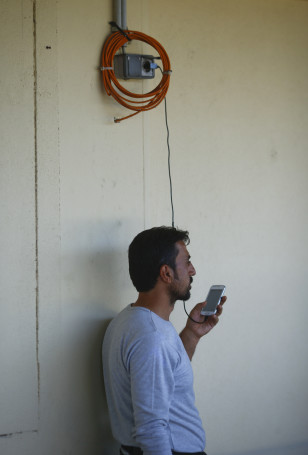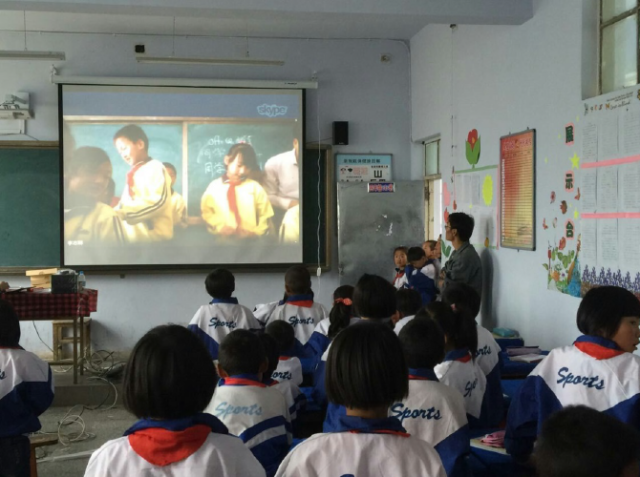Moving images of refugees trying to make their way to Europe – including the disturbing photo of a drowned child – spurred some in the online technology community to action. While the refugees’ most basic needs remain crucial, technology can fill communication gaps and provide much-needed mobile support.
Taking up the banner, Google, which pledged $5.5 million in matching donations this week, has raised $14 million to help fund relief. And a new initiative on Facebook and Twitter – Techfugees – seeks to mobilize the tech community and link refugees with non-governmental organizations and humanitarian agencies.
Once immediate needs are met, Kate Coyer, Director of the Civil Society and Technology Project at the Central European University, said refugees need tools to communicate, stay connected and get reliable information.
That means smartphones, chargers and Wi-Fi networks. She said people who approached her team in Hungary had cell phones but had lost their charging devices during travel. Along borders and in remote places where there are no power sources, Coyer said the options are solar power, power generators, or batteries.
At [the] Keleti train station in Budapest, even when there were an estimated 3000 refugees stuck there and sleeping rough, there were only four sources of power I counted and none of them provided by the station itself.
Coyer said the first thing she did was to “buy around 20 power strips to just add capacity to what was already there even if itself limited.”
Later, we were able to set up a small charging station using battery packs with USB ports that can be bought in any electronics shop.
After a few days, Greenpeace arrived at Keleti with a solar powered, high-capacity field set up, which was brilliant because using solar means you are generating more power than what is already there. They were onsite eight hours a day and we supplemented in the mornings and evening hours with our DIY [charging] station.

A refugee charges his mobile phone at the railway station in Vienna, Austria, Sept. 1, 2015. (Reuters)
Refugees with smartphones also need a 3G network and funding to load SIM cards for data, said Coyer. Once connected, the refugees she met accessed social media and messaging apps like Viber, WhatsApp, Skype and Facebook Messenger and apps that provide vital information about migration opportunities and risks, translation apps, and foreign currency calculators.
Online maps were particularly helpful, said Coyer, including one that showed the locations of known landmines surrounding Serbia and Croatia for those seeking alternative routes after Hungary closed its borders.
She said some of the maps were invaluable when helping refugees organize their transport “after traveling rough for weeks – at times put on buses they weren’t told where they were going or where they had ended up. Just being able to show people where they were could be helpful.”
“They should have better access to information from reliable sources about what the journey looks like and what to expect upon arrival,” advised Dana Janbek, Associate Professor of Public Relations at Massachusetts’ Lasell College. “Technology can help with communicating with the refugees the migration realities as well as opportunities.”
Janbek, who co-authored Syrian Refugees and Information Precarity, said the refugees she visited in Jordan experienced unstable and insecure access to information, which “potentially leaves them vulnerable to misinformation, among other things.”
One refugee told us ‘not everything is covered on television. Sometimes we only hear of it through the phone.’
Janbeck found refugees using cellphones to verify news and rumors, get updates, share information about their situation and maintain transnational ties with families and friends.
Reliable, actionable information is also crucial for humanitarian groups looking to provide aid and is sadly lacking in the current European refugee crisis. Despite rapid technological progress in the humanitarian space, getting reliable information in crisis situations is still a challenge, said Patrick Vinck, Director of the Program on Peace and Human Rights Data at the Harvard Humanitarian Initiative.
“We still know very little of what is going on and how many people exactly are there,” said Vinck. “Where are they? What are their needs? What are their plans? We have a lot of information gaps and so we need to really focus on completing that before we can really truly address the crisis.”
One way to fill the knowledge gap is KoboToolBox, a free, open source tool developed by the Harvard Humanitarian Initiative and used in the aftermath of the Nepal earthquake, during the Ebola outbreak, and in conflict zones to understand how people cope with violence.
Designed to assist aid groups with data collection and humanitarian needs assessment, the KoboToolBox lets users generate a questionnaire that can be deployed on mobile platforms to better understand where people are coming from, where they are going, what resources they have and what they hope for.
Trained individuals on the ground can collect information about unconnected demographics and make it available as quickly as possible to humanitarian responders.

An Afghan refugee holds her three-month-old baby girl Zainab at a beach on the Greek island of Lesbos after crossing a part of the Aegean sea from Turkey, Sept. 17, 2015. (Reuters)
“We need to be very mindful of bridging that gap and not solely relying on technology for communication and make sure that we have on the ground people that are reaching out to those who are not connected and typically would also be the most vulnerable,” said Vinck.
That, he added, was the reason KoboToolBox was created – to “shorten the cycle between the moment a crisis happens and the moment you have information about that crisis.”
Janbek believes technology can “alleviate some of the burdens that come with being a refugee” and enable organizations and researchers working with refugees to “join forces with technology giants to come up with creative solutions.”
But she cautioned technology is not the answer to all of the refugees’ problems and that any assistance should take limitations such as technology literacy, gender and age variables, fear of surveillance that might inhibit technology participation, and cost considerations into account.
“Any technology initiative designed to help them needs to keep that in mind,” she said. “The cost cannot be passed on to the refugees themselves.”





